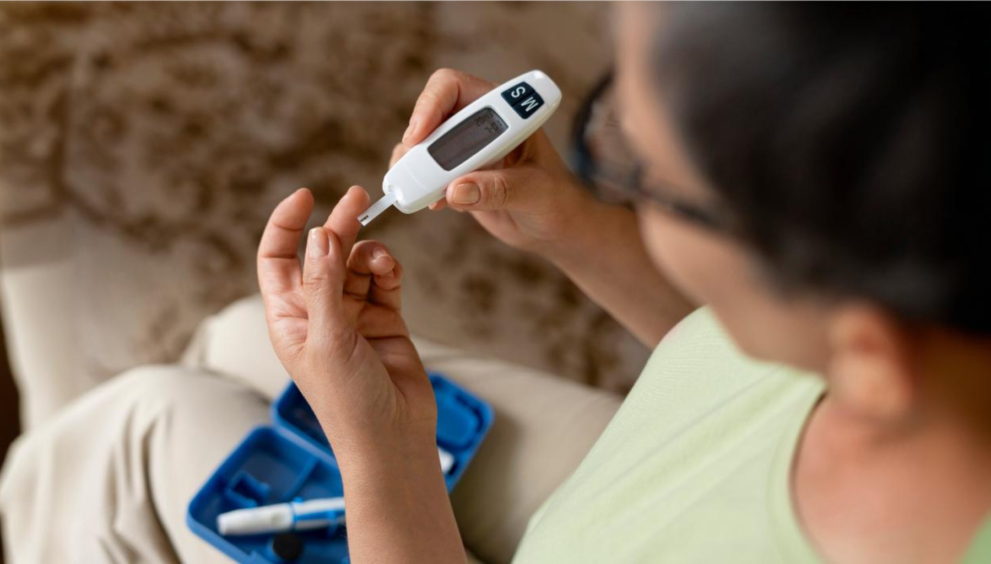Latest
STUDY: Quarter of world’s 828 million diabetes patients now in India
India is followed by China with 148 million diabetes cases, and the USA (42 million), Pakistan (36 million), Indonesia (25 million) and Brazil (22 million), also among the most affected countries
Author
Author
- admin / 1 year

- 0
- 4 min read

Author
India is now home to over a quarter of the world’s diabetes cases, with 212 million adults affected, as global diabetes numbers reached 828 million—more than four times the count in 1990, according to a new analysis in The Lancet.
India is followed by China with 148 million diabetes cases, and the USA (42 million), Pakistan (36 million), Indonesia (25 million) and Brazil (22 million), also among the most affected countries.
Additionally, in 2022, 445 million adults aged 30 and older with diabetes (59%) went untreated—over three times the number in 1990.
The study was unable to separate type 1 and type 2 diabetes in adults, however, previous evidence suggests that the vast majority of cases of diabetes in adults are type 2.
“Our study highlights widening global inequalities in diabetes, with treatment rates stagnating in many low- and middle-income countries where numbers of adults with diabetes are drastically increasing,” senior author Professor Majid Ezzati, of Imperial College London, said. “This is especially concerning as people with diabetes tend to be younger in low-income countries and, in the absence of effective treatment, are at risk of life-long complications – including amputation, heart disease, kidney damage or vision loss – or in some cases, premature death.”
Global rates of diabetes doubled
From 1990 to 2022, global diabetes rates doubled in both men (6.8% in 1990 to 14.3% in 2022) and women (6.9% to 13.9%). The changes in diabetes rate from 1990 to 2022 varied drastically across different countries with mostly Lower Middle Income Countries experiencing the largest increases. For example, the diabetes rate amongst women in Pakistan rose from 9.0% in 1990 to 30.9% in 2022, the largest increase across all countries. However, some higher-income countries, such as Japan, Canada and some countries in western Europe (eg. France, Spain and Denmark), saw no change or even a small decrease in diabetes rate over the last two decades.
Global variations in diabetes rates
The countries with the lowest rates of diabetes in 2022 were in western Europe and east Africa for both sexes, and in Japan and Canada for women. For example, diabetes rates in 2022 were as low as 2-4% for women in France, Denmark, Spain, Switzerland, and Sweden, and 3-5% for men in Denmark, France, Uganda, Kenya, Malawi, Spain, and Rwanda.
By contrast, countries with the highest rates, where 25% or more of the population had diabetes for both men and women, were the Pacific island nations and those located in the Caribbean and the Middle East and north Africa, as well as Pakistan and Malaysia. Among high-income industrialised nations, diabetes rates in 2022 were highest in the USA (11.4% amongst in women and 13.6% in men).
An important driver of the rise in type 2 diabetes rates, and its variation across countries, is obesity and poor diets. Diabetes rate was either already high or increased more in some of the regions where obesity was or became prevalent between 1990 to 2022, compared to many high-income countries, especially those in the Pacific and western Europe, where, in general, obesity and diabetes rates did not rise or rose by a relatively small amount.
“Given the disabling and potentially fatal consequences of diabetes, preventing diabetes through healthy diet and exercise is essential for better health throughout the world,” Dr Ranjit Mohan Anjana, Madras Diabetes Research Foundation, India, said. “Our findings highlight the need to see more ambitious policies, especially in lower-income regions of the world, that restrict unhealthy foods, make healthy foods affordable and improve opportunities to exercise through measures such as subsidies for healthy foods and free healthy school meals as well as promoting safe places for walking and exercising including free entrance to public parks and fitness centres.”
(Do you have a health-related claim that you would like us to fact-check? Send it to us, and we will fact-check it for you! You can send it on WhatsApp at +91-9311223141, mail us at hello@firstcheck.in, or click here to submit it online)









